SOME TOTAL SOLAR ECLIPSES OBSERVED FROM INDIA
- by R. C. Kapoor
Do you remember or have read about the total solar eclipse of Feb 16, 1980? The path of totality passed over India making it the first total solar eclipse of the century to be observed from India. In independent India, scientists, teachers and students from various research and educational institutions, universities and schools for the first time ever went about in large numbers to study so extensively the greatest spectacle nature offers the mankind with whatever equipments they could procure or make. While it is the corona of the Sun that is the most important entity of interest to the solar astronomer, visible for a very short duration of the totality, the impact of the event is not limited to the world of science alone. It is far reaching and multidimensional. The awareness a natural phenomenon and its scientific study generates is phenomenal. In that sense the Feb 16, 1980 eclipse was a great awakener post Independence that created an unprecedented excitement among persons from all walks of life. The path of totality fell over places in India such as Hubli, Raichur, Nalgonda and Konark etc.
The Indian Institute of Astrophysics established camps for observations at Hosur near Hubli and at Jawalgera near Raichur, in Karnataka. A distinct feature at the Jawalgera Camp was a massive all steel 68 feet tower which housed specific experimental installations. An optical system consisting of a coelostat and a lens placed atop the tower was to send the image of the eclipsed Sun to its bottom, converted into a basement laboratory with thatched walls. Here the IIA astronomers had installed a flash spectrograph in order to analyze the chromospheric and coronal radiation. All in all, there were seven experiments to be conducted. Camping with IIA were Czech and Yugoslav teams that set up experiments of their own. The Czechs had brought their equipment from Czechoslovakia in a caravan of cars and trucks via Iran and Pakistan in 25 days.
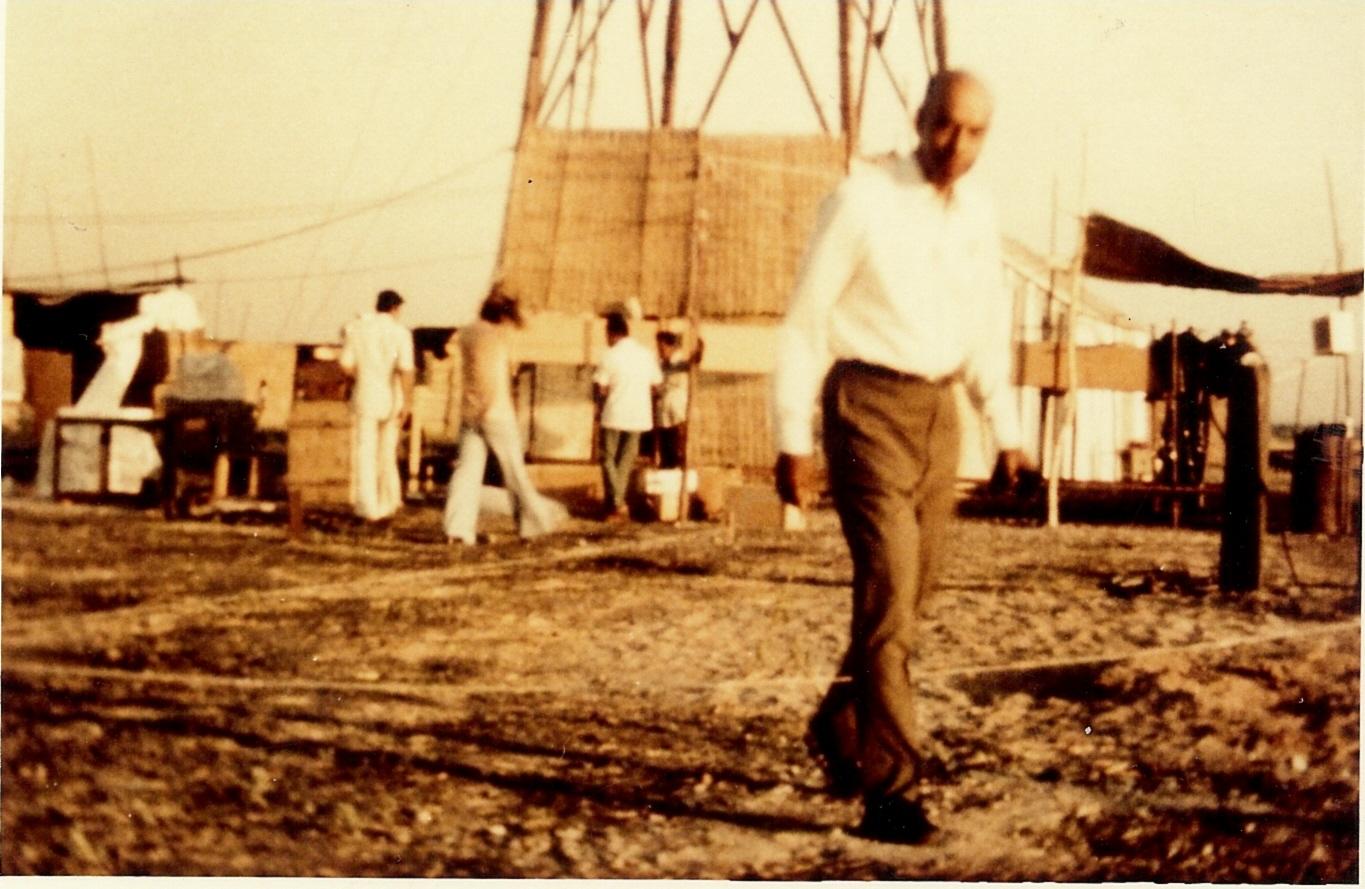
Fig. 1: The IIA established a solar eclipse camp at the Central State Farm, Jawalgera in the Raichur district, 421 km from Bangalore.
In the Fig. 1 above, M K Vainu Bappu, the founder director of the Institute and the team leader of the expedition is seen doing the rounds, on the day previous to the day of the dark Sun. The Camp turned a great attraction to newsmen, film makers, scientists, students and commoners alike. The author covered the entire expedition on 16 mm silent movie film of 33 min duration. Its audiovisual VHS version with a commentary by J C Bhattacharyya was prepared by the author and played at Vigyan Bhavan during the 1985 IAU at Delhi; it has now been preserved on DVD for the IIA Library. An anecdotal and semi-technical account of the expedition is available in Kapoor (1980).
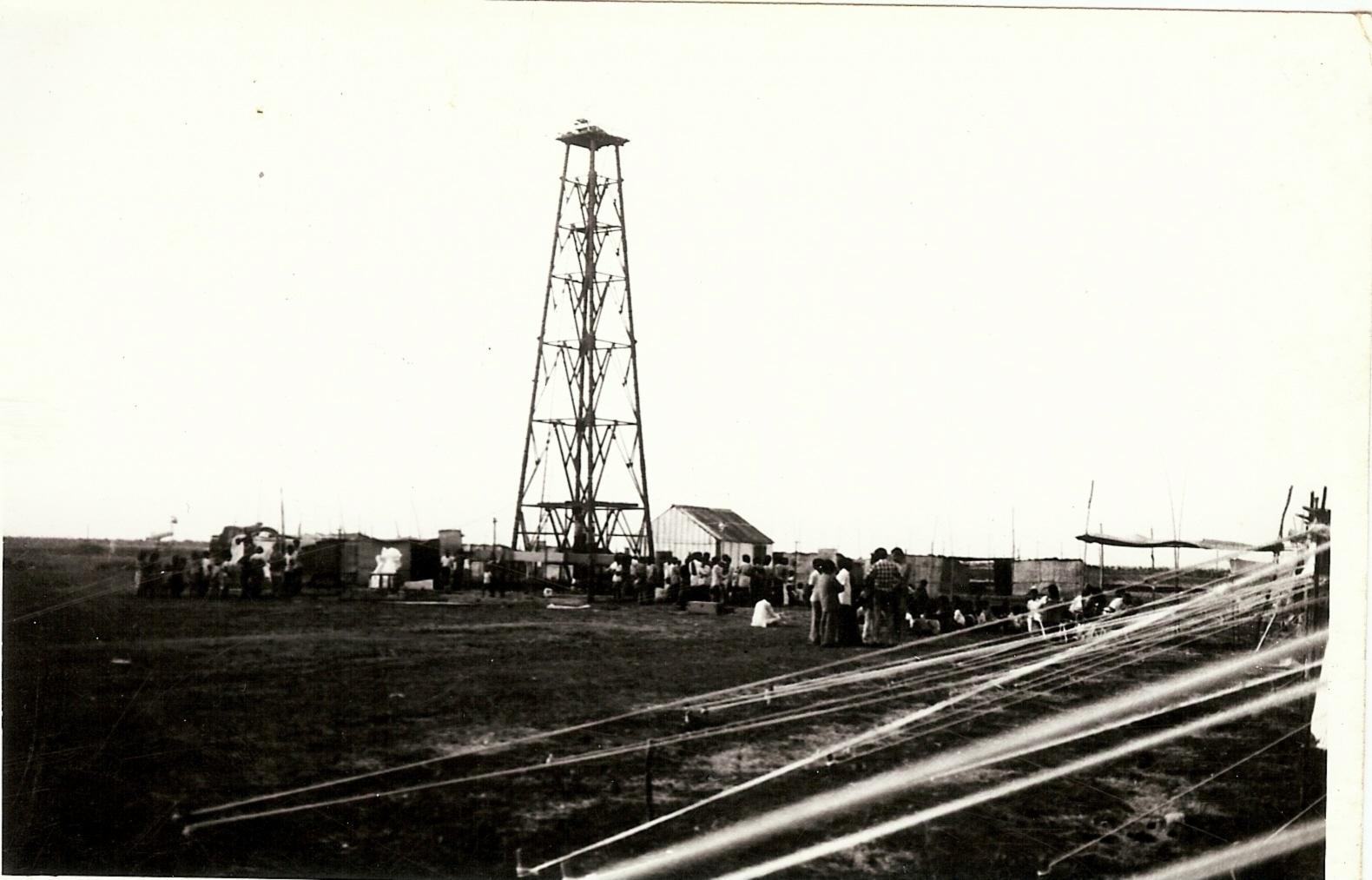
Fig. 2: A full view of the Jawalgera Camp; Figs. 1 & 2 are by Ashok Pati.

Fig. 3. The total solar eclipse of Feb 16, 1980. In a solar maximum year, the corona showed up almost symmetrical. This picture was taken at the Hosur camp.
Fifteen years later, India witnessed another total solar eclipse on Oct 24, 1995. By then there had been a great advancement in detector technology and the home grown observers worked their best to make observations with unprecedented sophistication and precision. The total solar eclipse of 1995 on 24th Oct. was a special one in that it happened on the day of the festival of lights and the path of totality passed over India at a favourable time of the day.
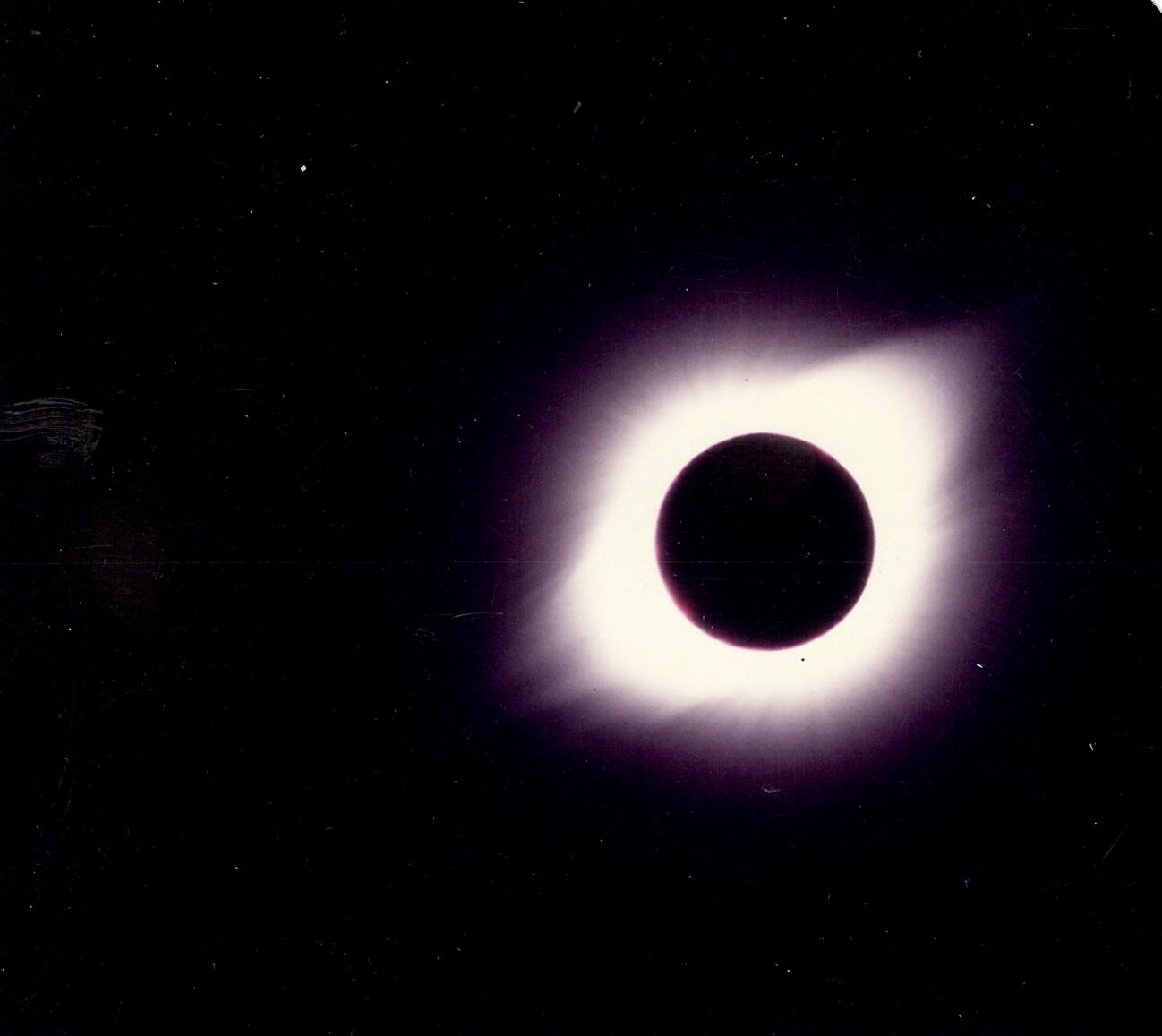
Fig. 4. The total solar eclipse Oct 24, 1995. The picture was taken by V Rusin.

Fig. 5. The IIA camp at Neem Ka Thana in Rajasthan for observations of the total solar eclipse of Oct 24, 1995.
The eclipse was to begin over Iran with the sunrise and the Moon’s shadow would move south-east passing over Afghanistan, Pakistan, India, the Bay of Bengal, Myanmar, Thailand, Cambodia, Vietnam and Malaysia.
The Indian Institute of Astrophysics was entrusted by the Indian National Science Academy with the responsibility to coordinate the scientific expeditions of the scientists from home and abroad. Many camps were established along the path of totality in Rajasthan, Uttar Pradesh, Iradatganj and Diamond Harbour near Kolkata. The Institute selected two places for its observations with modern equipment - Neem ka Thana in Rajasthan and Kalpi in Uttar Pradesh. Solar astronomers from other institutions as also those from the Slovak Republic, Brazil, Russia, Japan and Germany joined IIA at its camps. This required setting up campuses at the respective places, ready with necessary infrastructure well in advance to install and test the sensitive equipments for the crucial observations of the solar corona. At the Neem ka Thana Camp, the duration of totality was to be a mere 51 seconds while at Kalpi, it would last for 59 seconds. With excellent sky conditions in the morning, this provided a window comfortable enough to take observations that should help solve the perennial problems of the hot and rare atmosphere of the Sun, such as
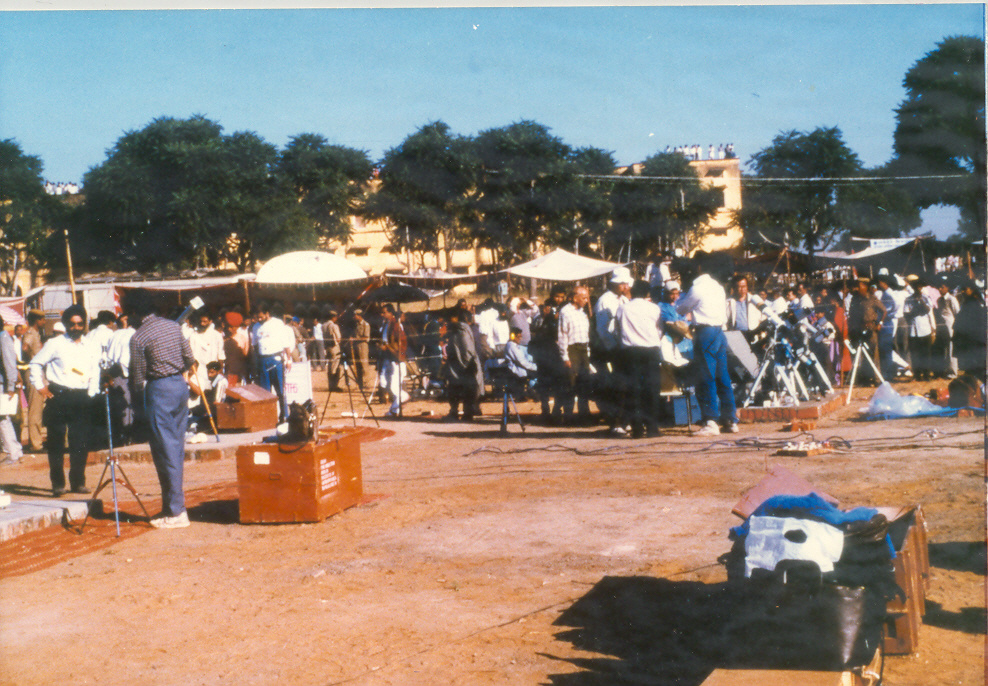
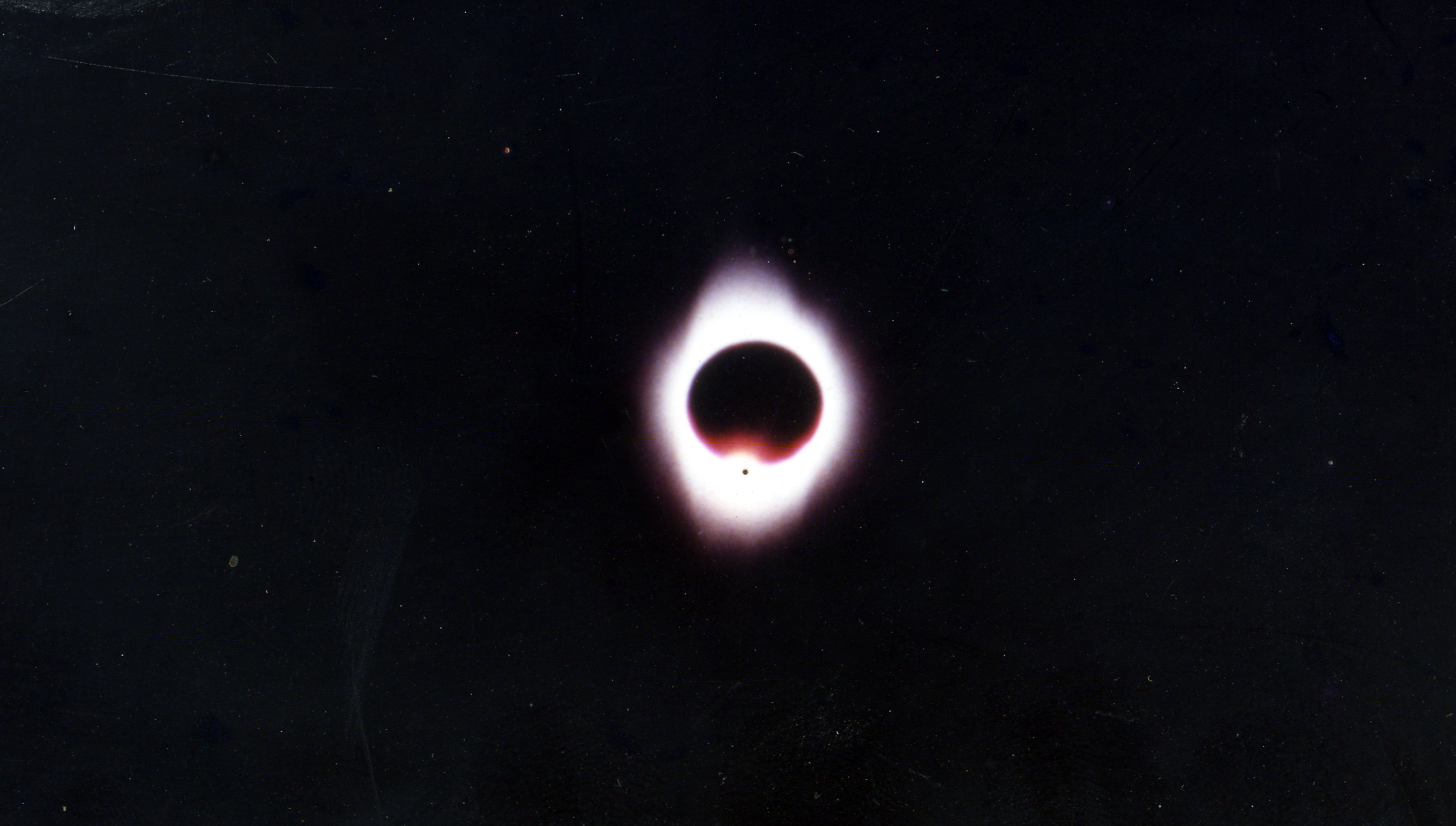
temperature and velocity structure of the corona, temperature and density structure of coronal loops and the quest for cooler pockets in the corona. The experiments included white light broad band photography, flash spectrum of the chromosphere of the Sun, narrow band photometry in the emission lines of ionized iron, ultra low spatial resolution photography in deep red light to detect dust ring around the Sun, high spatial and spectral resolution multislit spectroscopy of the corona in two emission lines, photometry of solar corona at a very high temporal resolution of 50-100 milliseconds to detect any short period intensity oscillations etc. A good many scientific institutions set up their experiments for various kinds of studies. These included studies on animal behaviour during an eclipse and the effect on circadian rhythm. A large number of eminent scientists from home and from abroad, and thousands of members of the public visited the Camp. We at IIA prepared information on the eclipse for use by the media and interacted with the general public to familiarize them with the eclipse event. We also worked with Doordarshan and All India Radio for their live coverage of the event at the crucial moments. For the first time efforts were made by an IIA team to photograph the eclipse by chasing the Moon’s shadow in an IAF plane AN-32 from the crew escape hatch on the roof of the cockpit at an altitude of 10,000 feet above the sea level.
The path of totality of the total solar eclipse of Aug 11, 1999 also passed over India but the totality occurred around the time when the Sun was too close to the horizon and about to set. This was Monsoon time too. So, Indian scientists went elsewhere for their observations.
A FEW HISTORICAL ECLIPSES THAT PASSED OVER INDIA
A total solar eclipse whose path passed over northern parts of India in the eighteenth Century is worth a mention here. The eclipse occurred on Oct 17, 1762, a Sunday. This happened to be the day of the festival of lights and may possibly have cast a decisive impact on the course of history in the undivided Punjab over which the path of totality passed. The backdrop here is the turbulent times Punjab went through most of the 18th Century. This is about the phase when Ahmad Shah Abdali (1722-1772), acclaimed the greatest warrior of Asia, was attempting to establish Afghan rule in Punjab and the Sikhs thwarting him tooth and nail. Between 1748 and 1767, the Shah had devastated Punjab nine times. In the carnage of Feb 5, 1762, known as the Wadda Ghallughara (the great holocaust) tens of thousands of Sikhs had been killed, their sacred Guru Granth Sahib lost and the holy Sarovar (tank) desecrated by the Afghans led by Abdali.
On Oct 17, 1762, the day of Deepawali, the Sikhs, about sixty thousand ‘horse and foot strong’, congregated in Amritsar and fought out a fierce battle with the Shah and his forces to avenge their great loss and humiliation heaped upon their religion. It culminated into an intense war that stretched till evening and witnessed a great loss of life. In the course, the solar eclipse took place. The Delhi Chronicle records that ‘it became so dark during the day that the stars became visible in the sky’. The historians write that the Shah took advantage of the growing darkness, drew off his forces and escaped to Lahore. The Sikhs left Amritsar, crossed the Sutlej and disappeared into the Lakkhi Jungle in Punjab. All we can say is that the eclipse ended the war early which otherwise would have caused even more bloodshed. It possibly saved Abdali’s life too. A more detailed discussion of this historical eclipse is given in Kapoor (2009) where the circumstances of the total solar eclipse are considered specific to Amritsar to recreate the ambience that may serve as a definitive input to the historians’ perceptions of an early retreat by Ahmed Shah Abdali’s forces.
The science of astrophysics came into being in the nineteenth century with the introduction of spectroscopy and photography to astronomy in the western world. In India it was pursued in due course. In this regard the most notable development was the first use of a spectroscope and identification of a new spectral line in the solar spectrum by Norman Pogson during the total solar eclipse of Aug 18, 1868 from Masulipatam (Fig. 8). This was also independently observed by the French physicist Janssen during the same eclipse at Guntur and by Norman Lockyer outside the eclipse. The line could not be attributed to any known element and thus named by Lockyer as 'helium' after the source. The new element was isolated in laboratory years later. The path of totality of the 1868 eclipse passed over Belgaum, Kolhapur, Gulbarga, Vijayawada, Kakinada and Hyderabad.
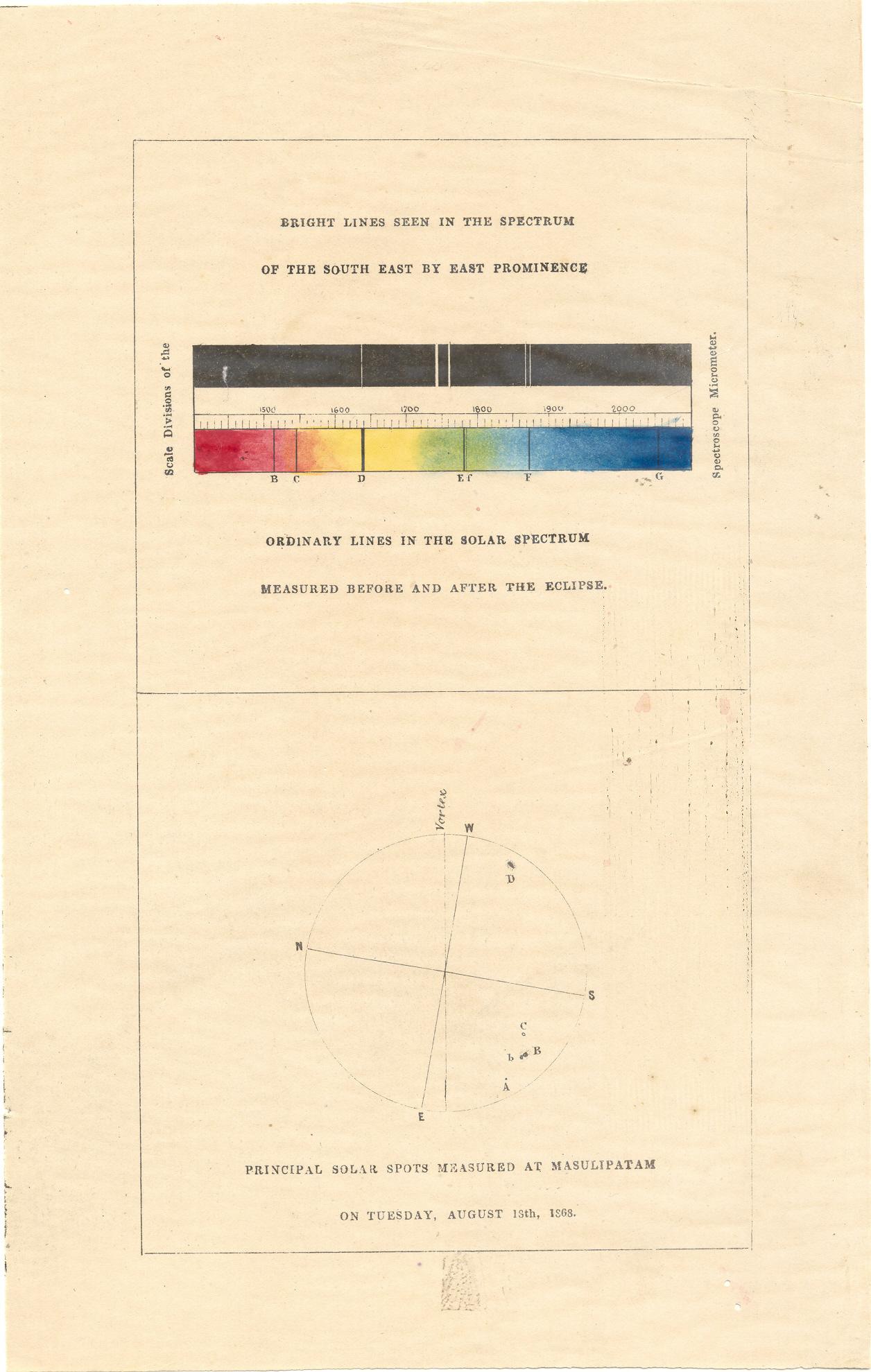
Fig 8: Hand-coloured sketch of the solar spectrum during the Total Solar Eclipse of Aug 18, 1868 (Source: Indian Institute of Astrophysics Archives).
Madras Observatory had also conducted observations during the total solar eclipse of Dec 12, 1871 and the annular solar eclipse of Jun 6, 1872. The path of totality of the 1871 eclipse passed over Mangalore, Coimbatore, Thiruchirapalli and Dindigul. The path of the maximum eclipse of 1872 passed over Thrissur, Mysore, Coimbatore, Salem and Chennai. During this eclipse, that was visible from Madras, Pogson recorded the spectrum of the solar chromosphere. This was the first ever observation of the flash spectrum made at an annular solar eclipse.
THE TOTAL SOLAR ECLIPSE OF JUL 22, 2009
On the Dec 20, 2007, the United Nations in its 62nd General Assembly proclaimed the year 2009 the International Year of Astronomy, IYA 2009 to celebrate the first astronomical use of the telescope in 1609 by Galileo Galilei. The IYA 2009 highlights global cooperation for peaceful purposes – the search for our cosmic origin and our common heritage that connect all the citizens of the world. The IYA 2009 vision is to convey to the people the excitement of discovery, help them rediscover their place in the universe through the day and night time sky and stimulate interest especially among the young in astronomy and science under a central theme - 'The Universe, Yours to Discover'. The activities take place at the global and regional levels.
It is just befitting that a total solar eclipse of an unusually large duration takes place this year. It shall occur on Jul 22, 2009 and the total solar eclipse will be visible across south-east Asia and western Pacific. It is with great interest we note that the path of totality shall pass over India also. However, like the 1999 eclipse, this time too the total eclipse will take place when Monsoon just gets vigorous. The other dampener is its happening just after the sunrise on the date. One therefore has to keep in mind the high likelihood of a cloud cover along the line of sight in the direction of the sunrise around the totality phase. Scientific expeditions are planned to head eastwards where the greener pastures lay; the IIA team plans to observe the eclipse from its camp at Anji, a small hilly area near Hangzhou in the eastern China where the probability is 60%.The experiments that have been planned aim to study the existence of waves in the solar corona and their nature. These are as follows: spectroscopy of the solar corona using a 30 cm two mirror system (coelostat) to direct the sunlight and the coronal light eventually onto the slit of a Littrow type spectrograph, and, photometry of the corona using two 40 cm telescopes in the red emission line and the green line through filters centered around 637.4 nm and 530.3 nm respectively. For more details the reader can visit the website of the Institute: www.iiap.res.in.
The solar eclipse event will be tracked in India with great interest. The path of totality passes over regions in India, Bhutan and China where cloud cover is normally present almost throughout around this time of the year. However, the situation slightly improves in respect of cloudiness as one goes eastwards, along the path of totality. The duration of totality also increases correspondingly. Shanghai as a big city offers best prospects from the point of viewing the eclipse where the totality will last for 5min 56 sec. Among the Indian cities, Patna is a good option.
The eclipse of Jul 22, 2009 is the longest total solar eclipse of the Century: in fact the totality is of longest duration in any solar eclipse between 1991 and 2132. The next eclipse that will surpass it in duration is due on June 13, 2132 only. It is thus of great interest that the forthcoming eclipse offers a totality lasting several minutes all along the path, lasting for up to 6 min 39 sec in the ocean about 100 km south of the Bonin Islands, southeast of Japan. The eclipse magnitude (the fraction of the Sun's diameter obscured by the Moon.) is quite large at 1.0799. The maximum theoretical duration for a total solar eclipse is 7 min 31 sec. The longest totality ever recorded was on the 20th June 1955 over the Philippines when totality lasted 7 minutes and 28 seconds. The maximum width of the path of totality is about 250 km. The closer one is to the centre line of the path of totality the longer is the duration of totality.
Some general information on the Sun, the Moon and solar eclipses is as follows that will help one appreciate the event more fully. While the actual diameters of the Sun and the Moon are vastly different, their angular diameters are very similar, the very basis of a grand spectacle these give rise to whenever the Earth, the Moon and the Sun get so aligned as to cause an eclipse of the Sun by the Moon while the Earth and the Moon go about in their respective orbits. The respective angular diameters as seen from the Earth are:
Maximum Minimum
Sun 32’36” 31’32”
Moon 33’39” 29’22”
Since the orbits do not lie in a plane, that of the Moon inclined by 5deg 08 min, a solar eclipse does not happen on every New Moon day. In a Century, there are a total of 238 solar eclipses. The maximum number of solar eclipses in a year is five whereas minimum number is two. The next eclipse of the Sun to watch from India is an annular one, due on the 15th January 2010 when the Moon will fail to completely cover the disc of the Sun. In such an event the corona of the Sun is not visible because the annulus of the disc will simply outshine it. The event will still be of interest and has a great educational value in its own right. The path shall pass over southern India around Kanya Kumari and Adam’s Bridge. The next time the path of totality passes over India will be on 20th March 2034 only. So, just do not miss the total solar eclipse of Jul 22 next.
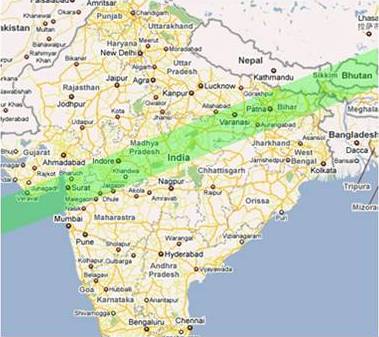
Fig 9: Path of totality over India of the Jul 22, 2009 Solar Eclipse.
In the Indian subcontinent, the path of totality of the eclipse of Jul 22, 2009 starts out from the Gujarat coast, passing over northern India, northern Bangla Desh, eastern Nepal, Bhutan, northern tip of Myanmar, central China and the Pacific Ocean. The partial eclipse will be visible from a much wider region, as also from all over India. Major Indian cities the path of totality passes over are Bhavnagar, Surat, Ujjain, Indore, Bhopal, Sagar, Jabalpur, Varanasi, Allahabad (grazing), Gaya, Patna, Bhagalpur, Jalpaigudi, Guwahati (grazing) and Dibrugarh etc. The Table 1 below gives in brief local circumstances for the total eclipse in different cities that fall in the path of totality:
| Table 1 | |||
| City | Second contact | Third contact | Sun |
| IST | IST | Altitude | |
| Surat | 06h 21m | 06h 24m | 02 deg |
| Bhopal | 06 22 | 06 25 | 07 deg |
| Patna | 06 25 | 06 28 | 15 deg |
| Jalpaigudi | 06 26 | 06 30 | 19 deg |
(The figures are rounded off).
Bangalore has had no luck with total solar eclipses since 1700; it witnessed an annular solar eclipse on 25.07.1748 (magnitude 0.93) and shall witness another on 22.06.2085 (magnitude 0.96).
VIEWING THE ECLIPSED SUN
Just for a glimpse of the corona, people undertake long and arduous journeys to difficult places. The gripping effect the serene beauty of the corona has on the viewer can not be put down in words. A minute or so before the second contact, the moment the Moon’s disc just about covers the Sun’s and the totality begins, one can look for shadow bands on the ground. These are seen as a result of passage of the sunlight through the irregularities in the Earth’s atmosphere. As the totality is about to commence the sky gets dark enough when you can see Venus and Mercury as also a number of bright stars.
Just before the second contact while the Moon is about to cover the Sun, the last rays leak through the uneven eastern limb of the Moon and produce a bead-like effect. This is called Bailey’s beads. These could be seen again just after the third contact. However, viewing the beads can be dangerous without a proper filter. After the totality is over and as the Moon’s disc moves eastwards, the Sun’s rays shine through the valleys on its western limb giving the effect of a diamond ring. This is one of the most magnificent sights one should not miss. With the diamond ring appearing it is time to revert to viewing the Sun through a proper filter.
As for the shape of the corona, the appearance depends on the phase of the solar cycle. At present the Sun is passing through its deepest minimum in nearly a hundred years. The sunspots are fewer in number; so much so that one could observe sunspots on only a hundred days of the year 2008 and in the year 2009 as of end of March, the counts have dropped even lower. So, the solar astronomers expect an asymmetrical corona.
Do not look at the Sun directly ever, more so during a solar eclipse. The only safe time is when the eclipse is total and that happens between the second and third contact. This is also the right moment to watch the eclipsed Sun directly, or study with proper equipment. Between the first and second contact as also during the third and the fourth contact when the eclipse is partial use a pin hole camera, a proper filter or dark x-ray film to have a direct view. Otherwise try to see the Sun’s reflection in muddy water.
SOME FUTURE TOTAL SOLAR ECLIPSES OBSERVABLE FROM INDIA
| 20.3.2034 | J&K, Himachal Pradesh |
| 3.6.2114 | Rajasthan, MP, UP, Bihar, West Bengal |
| 14.05.2124 | MP, Bihar, N-E States |
| 5.7.2168 | Kerala, Karnataka, Tamil Nadu |
| 08.11.2189 | Kerala, Tamil Nadu |
| 18.09.2248 | Gujarat, Maharashtra, Karnataka, Andhra Pradesh |
| 07.05.2255 | Kerala, Karnataka, Tamil Nadu, Andhra Pradesh |
REFERENCES
Kapoor R C 1980 The day of the dark sun (Feb 16, 1980 total solar eclipse), The Hawk, Jun 15.
http://prints.iiap.res.in/handle/2248/4498
http://prints.iiap.res.in/handle/2248/4499
http://prints.iiap.res.in/handle/2248/4500
See also www.iiap.res.in/eclipse_varanasi
Kapoor R C 2009 On the historical significance of the total solar eclipse of Oct 17, 1762 that passed over Panjab, To be published.

